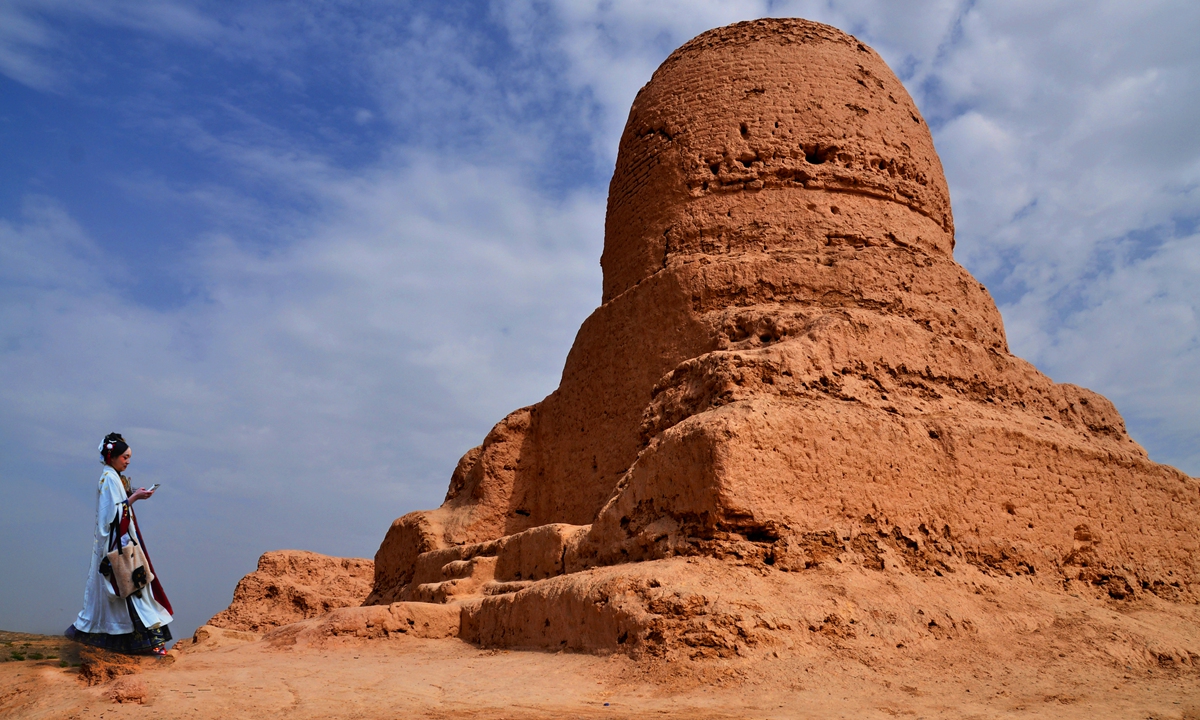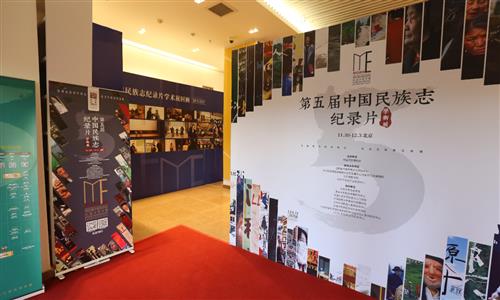ARTS / CULTURE & LEISURE
Global experts explore Xinjiang’s cultural heritage following forum
China has unique opportunity to integrate: scholar

The Mo'er Temple ruins Photo: VCG
Experts and scholars from China and abroad kicked off visits to cultural relic sites in Xinjiang for further studies on Thursday after the conclusion of the international forum. The international forum titled "The History and Future of Xinjiang, China" held on Wednesday in Kashi, Northwest China's Xinjiang Uygur Autonomous Region gathered over 170 experts to exchange views about the archaeological findings from the excavated Mo'er Temple.
The Mo'er Temple, dating back to around the 3rd century AD, is one of the earliest Buddhist sites discovered in Kashi. It gradually fell into disuse after the 10th century AD. Noted for housing the best-preserved earthen stupa in China's westernmost region, the site is evidence of the spread and flourishing of Buddhism in ancient times in the region. The remains of Buddhist art at the site highlight the origin, evolution, inclusiveness, and extensive history of Chinese civilization.
In addition to the Mo'er Temple ruins, the visits included stops such as the Id Kah Mosque, the ancient city of Kashi, and Jiaohe ancient town in Turpan.
At the forum on Wednesday, participants shared the consensus that Chinese civilization is the root of the cultures of all ethnic groups in Xinjiang. They advocated a comprehensive understanding of Xinjiang's history from the continuous historical perspective of Chinese civilization, and the historical role and contemporary value of the excellent traditional cultures of Xinjiang's various ethnic groups.
"China has the unique opportunity to integrate, to have harmony with Confucianism, Taoism, Buddhism, ethnic peoples, and Islam," Mary Tucker-Grim, a professor at the School of Forestry and Environment Studies of Yale University, told the Global Times on Wednesday.
Scholars studied Xinjiang from the historical perspective of community for the Chinese nation and the pattern of the Chinese people of all ethnic groups united in diversity to understand Xinjiang as a region where multiple cultures converge and various religions coexist.
"There is an internationally prevalent narrative that untruthfully portrays the relationship between Xinjiang regional culture and Chinese culture as being the 'assimilation' of the former by the latter. This reflects the widespread ignorance of Chinese history. Peoples of China's Western Regions have always been co-creators of Chinese culture," noted Pan Yue, director of the National Ethnic Affairs Commission, in a keynote speech at the forum.
Participants at the forum also highlighted that extensive archaeological evidence shows that Xinjiang has always been an important part of the Chinese cultural sphere. Xinjiang, located in the core area of the ancient Silk Road, remains a crucial channel for the exchange of Eastern and Western civilizations, embodying the spirit of the Silk Road, characterized by peace, cooperation, openness, inclusiveness, mutual learning, and mutual benefit.
Around 5,000 years ago, millet from North China had already reached the Xinjiang region. By about 4,000 years ago, painted pottery from the Majiayao culture in the upper Yellow River area had significantly entered eastern Xinjiang.
While about 3,500 years ago, painted pottery cultures were widespread north and south of the Tianshan Mountains, establishing Xinjiang as an important part of the early Chinese cultural sphere and laying the groundwork for its later political incorporation into China, said Han Jianye, professor at the School of History of Renmin University of China, at the forum.



